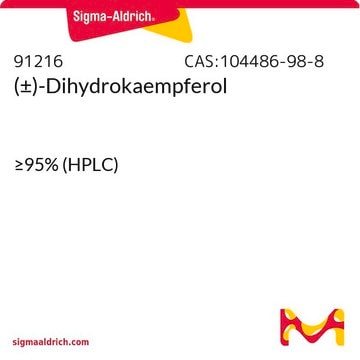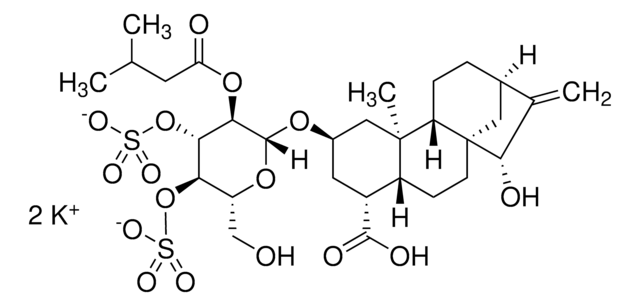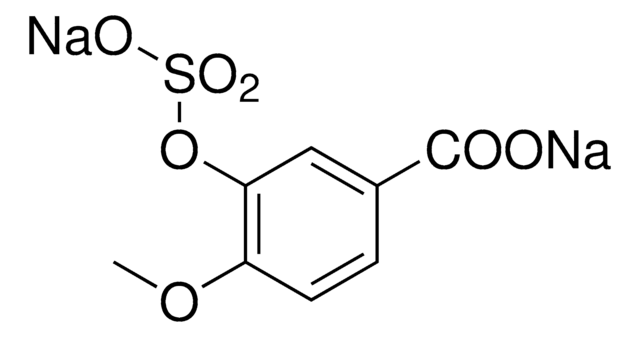B6179
Bongkrekic acid solution
from Pseudomonas cocovenenans, ≥95% (HPLC), solution, adenine nucleotide translocase inhibitor
About This Item
Produits recommandés
product name
Bongkrekic acid solution, from Pseudomonas cocovenenans, ≥95% (HPLC), ~1 mg/mL
Source biologique
Pseudomonas cocovenenans
Niveau de qualité
Pureté
≥95% (HPLC)
Forme
solution
Concentration
~1 mg/mL
Conditions d'expédition
wet ice
Température de stockage
−20°C
Chaîne SMILES
CO[C@H](C/C=C\C=C\CC\C=C\C[C@H](C)\C=C\C(CC(O)=O)=C/C(O)=O)\C(C)=C/C=C(\C)C(O)=O
InChI
1S/C28H38O7/c1-21(15-18-24(19-26(29)30)20-27(31)32)13-11-9-7-5-6-8-10-12-14-25(35-4)22(2)16-17-23(3)28(33)34/h6,8-12,15-19,21,25H,5,7,13-14,20H2,1-4H3,(H,29,30)(H,31,32)(H,33,34)/b8-6+,11-9+,12-10-,18-15+,22-16-,23-17+,24-19+/t21-,25+/m0/s1
Clé InChI
SHCXABJSXUACKU-WUTQZGRKSA-N
Application
Actions biochimiques/physiologiques
Caractéristiques et avantages
Autres remarques
Forme physique
Code de la classe de stockage
12 - Non Combustible Liquids
Classe de danger pour l'eau (WGK)
WGK 1
Point d'éclair (°F)
Not applicable
Point d'éclair (°C)
Not applicable
Équipement de protection individuelle
Eyeshields, Gloves, multi-purpose combination respirator cartridge (US)
Certificats d'analyse (COA)
Recherchez un Certificats d'analyse (COA) en saisissant le numéro de lot du produit. Les numéros de lot figurent sur l'étiquette du produit après les mots "Lot" ou "Batch".
Déjà en possession de ce produit ?
Retrouvez la documentation relative aux produits que vous avez récemment achetés dans la Bibliothèque de documents.
Les clients ont également consulté
Articles
Apoptosis regulation involves multiple pathways and molecules for cellular homeostasis.
Cell cycle phases (G1, S, G2, M) regulate cell growth, DNA replication, and division in proliferating cells.
Notre équipe de scientifiques dispose d'une expérience dans tous les secteurs de la recherche, notamment en sciences de la vie, science des matériaux, synthèse chimique, chromatographie, analyse et dans de nombreux autres domaines..
Contacter notre Service technique













